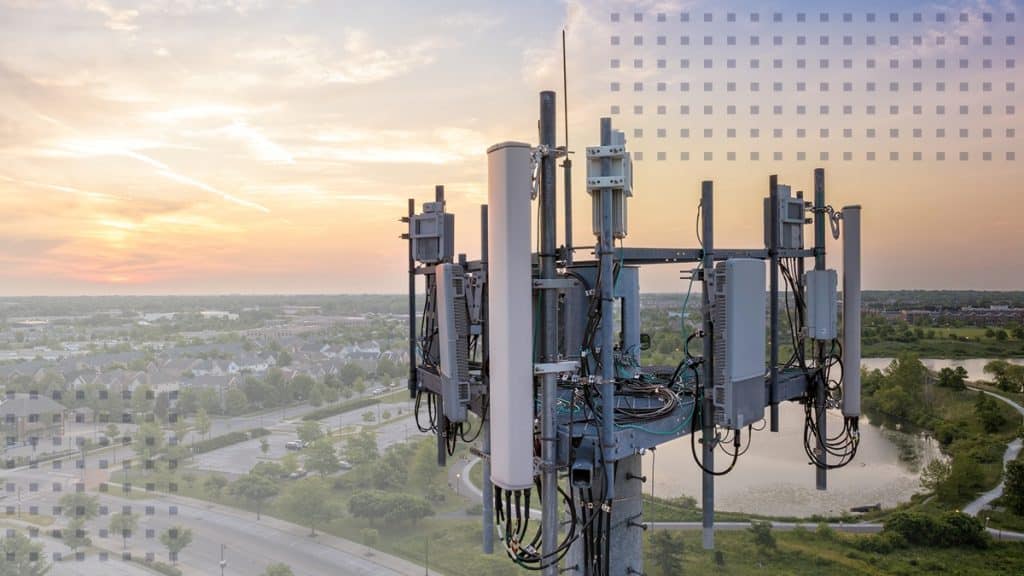In today’s digital age, access to high-speed internet has become more than a convenience—it’s a necessity for both individuals and businesses alike. However, not all regions are fortunate enough to have access to fiber optic internet infrastructure, leaving many communities underserved in terms of connectivity.
This lack of fiber optic internet presents a challenge for both consumers and internet service providers (ISPs) in these areas. But fear not, because there’s a viable alternative: Wireless Internet Service Providers (WISPs).
Wireless ISPs: An Alternative Solution
What are Wireless ISPs (WISPs)?
Wireless ISPs, or WISPs, are internet service providers that deliver internet access to subscribers through radio frequency signals instead of traditional wired connections like fiber optic cables. WISPs typically utilize radio towers and antennas to broadcast internet signals over a wide area, providing connectivity to users within the coverage zone.
Advantages of WISPs over traditional ISPs
Wireless Internet Service Providers (WISPs) Like Positron offer several advantages over traditional Internet Service Providers (ISPs), making them a compelling choice for many consumers, especially in areas without access to fiber optic internet infrastructure.
Here are some of the key advantages:
- Accessibility: WISPs can reach areas where laying fiber optic cables is impractical or cost-prohibitive. This accessibility makes them invaluable for rural and remote communities that may otherwise lack reliable internet connectivity.
- Quick Deployment: WISPs can often deploy their infrastructure more quickly than traditional ISPs. This rapid deployment capability is particularly beneficial in situations where there is an urgent need to establish internet access, such as in disaster recovery efforts or emergency situations.
- Flexibility: Wireless technology allows WISPs to adapt to changing circumstances and scale their operations as needed. Whether it’s expanding coverage to new areas or upgrading equipment to improve performance, WISPs have the flexibility to meet evolving demands.
- Cost-Effectiveness: Building and maintaining a wired internet infrastructure can be expensive, especially in rural or sparsely populated areas. WISPs offer a more cost-effective alternative, requiring fewer physical resources and infrastructure investments to deliver internet access.
- Reliability: Contrary to common misconceptions, WISPs can provide reliable internet service comparable to traditional wired connections. With advancements in technology and careful network planning, WISPs can deliver consistent and dependable connectivity to their subscribers.
- Scalability: WISPs have the ability to scale their operations to accommodate growing demand for internet access. Whether it’s adding more subscribers to an existing network or expanding coverage to serve larger geographic areas, WISPs can scale their infrastructure accordingly.
- Innovation: WISPs are often at the forefront of technological innovation in the telecommunications industry. From pioneering new wireless technologies to implementing innovative business models, WISPs drive innovation and competition in the market, ultimately benefiting consumers.
- Competition: The presence of WISPs in the market introduces healthy competition, which can lead to lower prices, improved service quality, and greater consumer choice. By offering an alternative to traditional ISPs, WISPs encourage innovation and drive improvements in the overall internet ecosystem.
Overall, Wireless Internet Service Providers offer a compelling alternative to traditional ISPs, providing accessible, cost-effective, and reliable internet connectivity to underserved communities around the world.

3 Ways Wireless ISPs Can Compete Without Fiber
While fiber optic internet may offer unparalleled speed and reliability, Wireless ISPs can still compete effectively by leveraging their unique strengths and adopting innovative strategies.
Leveraging Existing Infrastructure
One of the key advantages of WISPs is their ability to leverage existing infrastructure to expand their coverage areas and improve service quality. By utilizing towers and other network assets, WISPs can reduce deployment costs and accelerate expansion efforts.
Expanding coverage areas strategically
By strategically deploying towers and other network infrastructure, WISPs can maximize coverage and ensure reliable connectivity for their subscribers. This approach allows WISPs to target underserved areas more effectively and compete with traditional ISPs on a level playing field.
Investing in Innovative Technologies
To remain competitive in the absence of fiber optic internet, WISPs must invest in innovative technologies that enhance their network performance and reliability.
Exploring 5G and future wireless technologies
The rollout of 5G networks presents an exciting opportunity for WISPs to deliver even faster and more reliable internet service to their subscribers. By embracing 5G technology, WISPs can stay ahead of the curve and provide a superior user experience compared to traditional wired connections.
Implementing advanced network management systems
In addition to 5G, WISPs can also benefit from implementing advanced network management systems that optimize performance and enhance reliability. By leveraging intelligent algorithms and predictive analytics, WISPs can proactively identify and address potential issues before they impact subscribers, ensuring a seamless and uninterrupted internet experience.
Providing Exceptional Customer Service
In the highly competitive world of internet service provision, customer service can be a key differentiator for WISPs looking to stand out from the crowd.
Personalized support and troubleshooting
WISPs can differentiate themselves by offering personalized support and troubleshooting assistance to their subscribers. By building strong relationships with customers and addressing their individual needs and concerns, WISPs can foster loyalty and retention, ultimately driving business growth.
Community engagement and involvement
Finally, WISPs can enhance their competitive position by actively engaging with the communities they serve. Whether through sponsorships, community events, or outreach programs, WISPs can demonstrate their commitment to making a positive impact and building lasting relationships with customers.
Conclusion
In conclusion, while the absence of fiber optic internet may present challenges for Wireless ISPs, there are still plenty of opportunities for them to compete and thrive in today’s digital landscape. By leveraging existing infrastructure, investing in innovative technologies, and providing exceptional customer service, WISPs can position themselves as viable alternatives to traditional ISPs and play a crucial role in bridging the digital divide.
